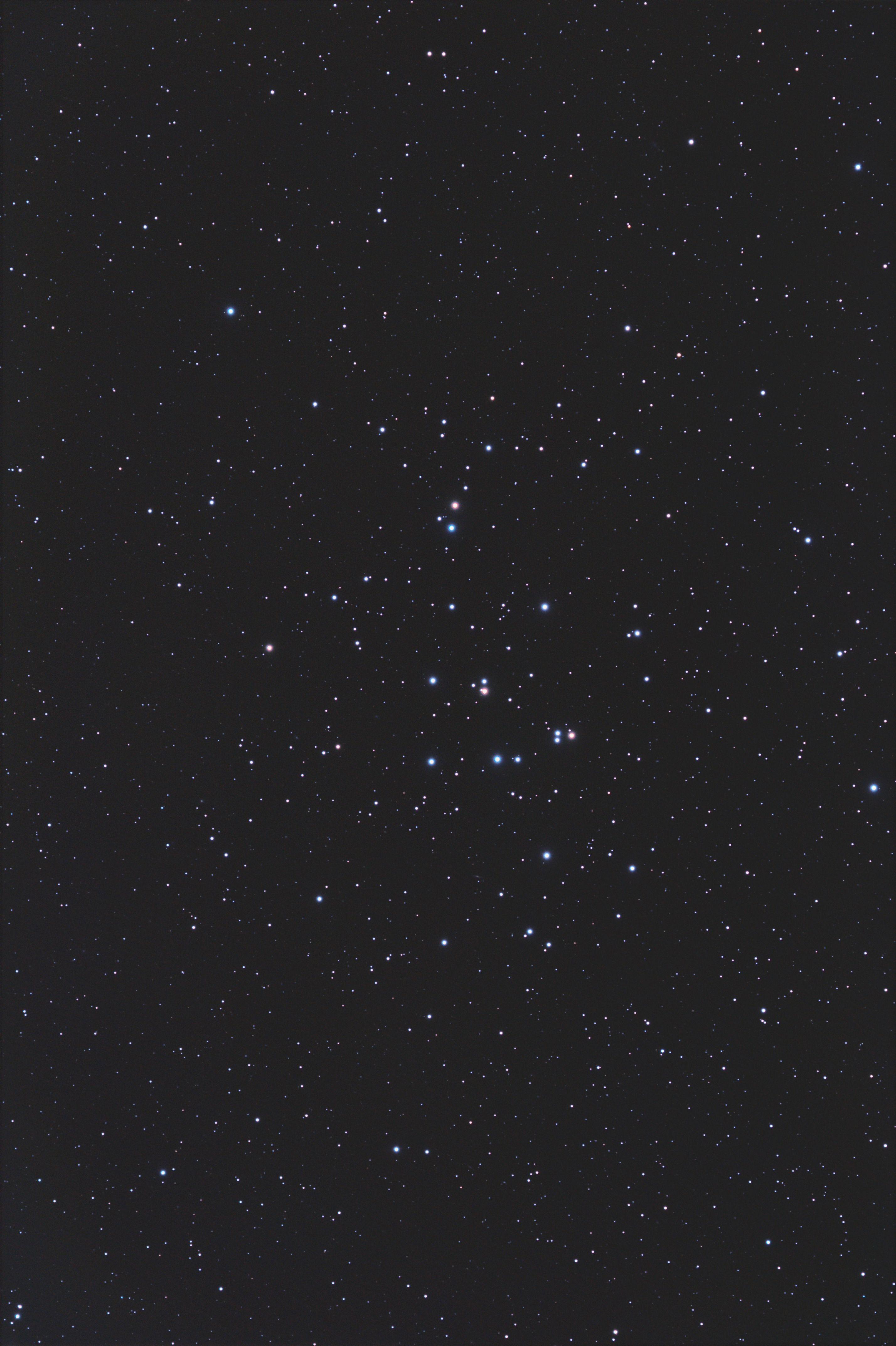Back to the clusters with an evergreen: M45, aka the Beehive. This image is the sum of 25 six-minute exposures at ISO400.
The Beeive Cluster, also known as Praesepe (Latin for “manger”), M44, NG 2632, or Cr 189, is an open cluster in the constellation Cancer. It is one of the nearest open clusters to the Solar System, and it contains a larger star population than most other nearby clusters. Under dark skies the Beehive Cluster looks like a nebulous object to the naked eye; thus it has been known since ancient times. The classical astronomer Ptolemy called it “the nebulous mass in the breast of Cancer,” and it was among the first objects that Galileo studied with his telescope The cluster’s age and proper motion coincide with those of the Hyades open cluster, suggesting that both share a similar origin. Both clusters also contain red giants and white dwarfs, which represent later stages of stellar evolution, along with main sequence stars of spectral classes A, F, G, K, and M. Currently there is no consensus on the cluster’s distance, with recent sources suggesting 160 to 187 parsecs (520-610 light years). There is better agreement on its age, at about 600 million years. This is equivalent to the age of the Hyades (~625 million years). The bright central core of the cluster has a diameter of about 7 parsecs (22.8 light years)
(Wikipedia).

